-
Posts
5,958 -
Joined
-
Last visited
Content Type
Profiles
Forums
Blogs
Gallery
Events
Exhibition Layout Details
Store
Posts posted by Pacific231G
-
-
On 31/03/2024 at 11:03, Oldddudders said:
I have a phobia about terminal stations without a run-round. I see operations beyond multiple-units or pull-push being awkward at best. Clearly I have missed something.
What you have missed, but Ian Futers didn't because he modelled it, is the old three platform terminus at Fort William with just two points. Although it originally had a releasing crossover between the two "bay" platforms, that largely fell out of use once the Mallaig extension turned the terminus into a reversing junction and it was taken out in the 1950s.
The terminus was actually too intensively worked for a run-round to be of much use as, several times a day, trains from Mallaig and Glasgow crossed there often followed by a summer relief train. To add to the fun, sleepers and dining cars from Glasgow generally terminated at Fort Williiam with the rest of the train going forward to Mallaig but sometimes with an observation car attached (and vice-versa in the opposite direction). There was at one time even a summer only embryonic motorail type service that ferried accompanied cars between Fort William and Mallaig to avoid the "single lane with passing places" A road between them. Tail loads of fish vans were also not infrequent and there was often work for not one but two station pilots. I've watched the operation there during a couple of family holidays in the 1960s and it was fascinating. Nothing much happened for several hours then all hell broke loose when trains arrived one after the other from both glasgow and Mallaig.
It is an interesting irony that small branch line termini almost invariably required a run-round loop when trains were loco hauled but busy main line and suburban termini very often did not-an irony not lost of Cyril Freezer when he designed Minories!
One of the most interesting layouts that I've operated was Giles Barnabe's On16.5 Puerto Paseo which, in about five feet, included a three platform terminus at the end of a single track main line with a two road goods yard and a kickback to the local docks .


These two images show the whole scenic part of the layout. The turntable was solely to turn the railway's single ended railcars.
Puerto Paseo didn't have a releasing crossover but, with a well thought out operating sequence that took about an hour to work through, I found that I could enjoy operating several sequences (taking it in turns) during an exhibiton day without losing interest.
Here are three more images, just because I really like this small layout and its operational potential.


-
 10
10
-
 2
2
-
-
BBC News Channel is currently showing a fascinating edition of The Travel Show - "Germans and their Railways-a Love Story". It's based on their young reporter exploring Germany with a "Deutschland Ticket" - which gives access to the country's regional rail network for I think 47€ a month (You have to subscribe to get the ticlet and, if visiting as a tourist, remember to cancel before you pay for the next month) .
It includes the Alexanderplatz station on the Berlin U-Bahn, which was a ghost station during the Berlin Wall period as it was in East Berlin on a West Berlin line that passed through a bit of East Berlin. Also, the Wuppertal Schwebenbahn and its new museum that's just opened and, most interesting of all for me, the Lorenbahn that serves islands on the north coast that regualrly flood and on which locals run their own homebuilt railcars (the railway is actually owned by the government agency that protects the coast from erosion) Unfortunately visitors aren't supposed to ride on them unless staying with someone on the islands (in this case the owner of a B&B)
The programme is inevitably a bit superficial but nevertheless very interesting and well shot.
It's on the BBC News channel I think once more today and once tomorrow before the next edition appears.
-
 1
1
-
 1
1
-
 2
2
-
-
Which series of The Sweeny had the shot in the opening titles of the pedestrian overpass (long since dismantled) over Shepherds Bush?
-
11 hours ago, adb968008 said:
Doesnt this same logic apply to CDL ?
i’m not arguing against cdl, i’m arguing for seatbelts on trains, as at least an optional… as a family man i’d have my kids wearing an airline style lap belt on a higher speed service, just as they do on a plane, car, anywhere else.
There's no sensible comparison between an aircraft or road vehicle and a train. The chances of a collision or derailment while on a train are minute compared with a road vehicle which is also likely to swerve or brake heavily to avoid an accident. While an air accident is probably equally unikely, at least on a scheduled flight, the chances of heavy turbulence, a violent manouevre , a heavy landing or an aborted take-off are fairly common- that's why one is required to wear one's seatbelt during take off and landing and advised to while seated throughout the flight.
Seat belts in cars had a massive effect on fatalities and "life changing" injuries. On trains, any benefit would be very close to zero but the cost would not be.
-
 1
1
-
 9
9
-
-
On 06/04/2024 at 13:24, 2E Sub Shed said:
Old enough to remember those Government Information Films on TV urging us to unplug everything at night before retiring to bed.
Anyone remember the acronym SIDE?* I know what it means (electrical engineering was part of my OND though we knew it as Magic) but I don't know why I can still recall it. I think it was in one of those OU programmes, something about HV electrical work, that I sometimes ended up putting out on BBC-2. but that was over forty-five years ago. Clearly it was a very good acronym.
* Switch off. Isolate, Dump, Earth.
-
 3
3
-
-
On 21/03/2024 at 22:06, PhilJ W said:
Energex is the is the electricity distributor for South East Queensland. I wouldn't want to argue with this particular arachnid about whose meter it is either.
"Some funnel-web species deliver a bite so toxic that it can kill an adult human within 15 minutes." I'm always rather amazed that there are any Australians still alive.
-
 2
2
-
 1
1
-
-
-
On 06/04/2024 at 18:00, The Johnster said:
Common operating mistake at exhibitions, BLT layouts; train arrives and stops short for the loco to be uncoupled and draw forward for running around. No, unless the buildings are placed to facilitate it, you are making your passenger walk to the exit gate in the rain and having to unload parcels out in the open as well. Stop close to the buffers, wait for the passengers to clear the premises and the parcels/mail work to be done, then set back before uncoupling the loco. Run around, couple on the other end, and wait a minute while the guard performs the brake continuity test (I will probably walk away from your layout if you simply continue to push the stock back towards the buffers or stay in that postion), then set back to the buffers. Passenger can now board conveniently and loading parcels/mails be done in proximity to the office and messroom.
I agree about carrying out all the relevant operations properly but I do compress the time required for things like coupling & uncoupling, passengers boarding and alighting, and brake tests. At an exhibution, If nothing at all happens for a whole minute while the imaginary brake test is suposedly carried out or for two minutes to give the imaginary passengers time to open the imaginary doors, then everyone else watching will probably walk away.
-
 1
1
-
 1
1
-
-
On 28/11/2023 at 17:06, big jim said:
Not long after I started with chiltern we did a DVT move to Doncaster, the unique white and blue one, and we went Wembley LMD-Neasden Jn-Acton canal wharf (reverse)-Wembley yard (reverse)-Primrose Hill-north london line to incline down to the ECML then onward to Doncaster, Mr Roast was the instructor/conductor of course, can’t remember why I was on it though, possibly DVT trainingThese might be of interest to you, taken 1st July 2012 on a chiltern diversion into Paddington, I got a conductor at West Ruislip and I sat in the 2nd mans seat to Paddington and back
and a couple from Christmas Day 2021
I've only just seen these Big Jim but thanks for posting them. The only time I mamaged to travel on that stretch of line was during that same Chiltern Railways diversion in 2012. I got the Central Line from Perivale to W. Ruislip then the Chiltern to Paddington. Since they cut the line approaching OOC, the Greenford Branch has been a lot less interesting though we had some excitement before Easter when the late Adrian Shooters' new battery electrics sets were being tested. How soon they come into service is anyone's guess buit the branch is being used as the test location for these trains that GWR intend to use on most of their shorter branch lines . They are in any case a bit out of era for this layout unless WCML applies rule 1.
-
I do use cleaning blocks but those sold by DOGA which seem far less abrasive than the Peco track rubbers. I use IPA sparinngly to clean between switch and stock rails.
Something that Pendon uses that may be helpful is the rough side of a small piece of hardboard. For the Dartmoor and Vale scenes this is mounted on a skeleton bogie wagon using a weighted holder to keep presure on the rail but I've used my own, cut from a piece of hardboard, as a hand tool on my own layout to give the track a final polish.
-
On 22/03/2024 at 14:38, doctor quinn said:
Carl Arendt's micro site has a suggestion based on a grain depot in Valmont that you may find helpful https://www.carendt.com/micro-layout-design-gallery/standard-gauge-lines/
I'm glad to see that's still on the late Carl Arendt's site. It was I who sent it to him having discovered it while exploring the remains of the line that ran between Fecamp and Dieppe.
These are the photos I took of it at the time (a couple of which are on the carendt site)

The former level crossing keeper's cottage the line ran across the road here but had been tarmacced pver.

This was the view from the other end

the yard was shunted using a powered capstan - quite common around small rail connected silos- with a couple of unpowered ones - including this one - for directing or reversing the hauilage cable.

This was my plan of the site (scaled in feet for 1:87 scale)

This is the same but with dimensions added from the rough sketch and pacing out of the yard I did when I visited it and measurements taken from Google Earth and IGN . The line marked as dismantled was the start of the station's passing loop.
Finally, this was my suggested Microlayout based on it

The yard was shunted using an electric capstan but I've seen similar silos - perhaps a little larger- with an old locotracteur, often a Moyse, apparently rotting away but actully used in the brief periods when the silos got busy. There used to be a lot of these small local silos in France and they kept a lot of secondary lines in business until the 1990s, decades after they lost their passenger services. They did though have a nasty habit of blowing up (grain dust, like many other small particles in aerosol, can be explosive) so were replaced with fewer much larger silos.
The way this was worked would have been that the two points connecting the yard to the SNCF line were opened by the crew of the SNCF pick-up goods who picked up and dropped wagons as apprpriate. The points were then padlocked shut and the silo staff could shunt their private sidings to their hearts content as wagons were loaded or unloaded one by one.
The station's LM (Limite de Manouevres - shunt limit) sign was just before the level crossing but that must have been passed when shunting to or from the private sidings.
-
 3
3
-
 2
2
-
-
4 hours ago, SteveyDee68 said:
Whoops! 😆Definitely guilty as charged, but done completely innocently! The crazy thing is, I am well aware of the Timesaver plan so it is a bit embarrassing to find I’ve unknowingly recreated it! 🤣
Steve S
My tongue was firmly in my cheek but don't worry. the GWR (or possibly the South Devon Railway) used the plan a couple of generations before John Allen. If you look at Ashburton's track plan it was, apart from the locos shed road, a timesaver!
In its American form, with just a coupler of freight cars in each siding, timesaver always seemed to me very contrived -which of course it was- it was a pure shunting puzzle and not intended to be in any way realsitic. Ingelnook Sidings, on the other hand could be a small rural goods yard. I have found though that if you add a run round loop and another siding facing the other way you get an awful lot of far less contrived shunting.
This was what I came up with in five feet but I did some experiments and found that, with small radius points and a small tank loco, it could be crammed into 4ft 6ins which is only about three or four inches longer than a 5-3-3 Inglenook using the same European H0 wagons.

-
 2
2
-
 1
1
-
-
On 14/01/2024 at 12:50, SteveyDee68 said:
A picture paints a thousand words…
Here’s an Apple Pencil created drawing showing the layout I described in my previous post. However, I’ve added a kickback siding to the left of the top siding to serve a dock area (to fit your dock theme) and to justify the loop’s existence, and added a warehouse serving the end of the top right siding to justify leaving two wagons there. Engine shown in green with two wagons (dashed outlines) to show necessary headshunts - the top kickback siding could have all of its wagons removed in one move if the top right siding was empty, but wagons shown in white are not part of the Inglenook puzzle so you could (if you wish) have a short top right siding in order to introduce further shunting complications.
It’s an Inglenook but avoids using the entrance line as part of the puzzle track work - somewhere to leave a brake van? The arrow suggests a possible exit to a fiddlestick to allow trains to exit - which would allow new stock to be introduced.
Nothing groundbreaking here - in fact, I think the track plan has more or less copied most of the micro layouts you will find under The Sheep Chronicles … which shows you what fun can be had with a small loop and a couple of sidings!
You do what you want to do, it’s your layout - but hopefully I’ve shown that a loop might be included if you use the reduced Inglenook puzzle setting.
Steve S
PS
Just realised you might just be able to fit two complete sets of 7 wagons on the board itself so you could introduce more variety of stock! Another thought - an overtrack crane over the kickback siding at top left would look appropriate!
PPS
Flipping the whole thing around so the dock is at the front and it could be extended all along the front edge so that the baseboard edge is the dock wall (as Graham Muspratt’s Canute Road Quay).
Stevey, I think you may have just re-invented John Allen's "Timesaver".
https://gdlines.org/GDLines/Timesaver.html
Which is not altogether surpring as there are only so many ways to arrange five points (though as Timesaver was designed for 40ft American cars, you'd probablyy need to semi permanently couple wagons in pairs to make the puzzle work.
I agree about making the front edge of the layout a quayside, possibly with an inch of "water" and just a couple of small boats.
You can fit a layout with a run round loop into four feett. as Paul Gittins did it with his Enigma Engineering layout (BRM Nowember 2006) and in P4 to boot using two foot radius points. The fiddle yard to the right is optional with a level crossing gate closed during shunting . The sidings and headshunts will each take two wagons (limited in the case of the sidings by the wagon turntable and some rusting wagon wheels on the other siding . The run round is limited to three wagons (it will take four but that makes the puzzle too easy)
I've drawn it using Peco short Streamline points and it clearly fits.

The layout has six wagons on its visible section (the fiddle yard allows them to be changed) . "Enigma Engineering" followed his H0 "Peforia Narrows" (Continental Modeller Oct 2003) which had the same double crossover layout and was 5ft 6ins by 9ins with the same siding and loop capacities but for 40ft freight cars and no fiddle yard. With six cars on the layout the puzzle was set in much the same way as Inglenook Sidings by randomly dealing six "destination" cards (including the departure track and then the six freight car cards to be shunted into them. Enigma Engineering was opeated in much the same way but with the additional complicatiion of a brake van to be on the rear of trains arriving from the fiddle yard and departing to it.
I think this arrangement, with two of the sidings facing in opposite directions, gives more interesting operation than Inglenook and it was used by Peter Denny for the first version of Leighton Buzzar (Linslade). With a little extra length it can also accomodate a passenger station.
-
 1
1
-
 1
1
-
-
With that much space to work with and assuming a mainline set up, I wouldn't limit yourself to four coach trains which IMHO aren't really convincing as expresses. Visually, in 00 or H0, five coaches seems to just do it but I'd plan on a platform long enough to take at least a six coach train plus loco. It doesn't matter if trains are shorter than the platforms- that's pretty normal- but you might kick yuorself for not allowing for anything longer. The steam era expresses I remember as a teenager at Oxford were very typically eight coaches long - apart from the longer summer Saturday intergionals- so I think six would be a reasonable contraction. Obviously, the longer the platforms the less open main line running you'll get.
It does also seem to be the case that the smaller the scale the less compression you can get away with. At normal layout viewing distances I find four coach expresses fairly convincing in O scale but not in 00/H0 and in N even a six coach train can look a bit short.
-
 1
1
-
 3
3
-
 1
1
-
-
When I was very young, probably in the late 50s very early 60s, I went to the MRC show in Central Hall two or three times with my father. In those days he could just drive into Westminster and park on a nearby side-street!
The only layout I can actually remember was Wilbert Awdrey's Ffarquhar (Mk1) which he was operating. Though I'd had a couple of his books I'd never been a great fan of the Railway Series and, even as a child, thought locomotives with faces silly. However, there was none of that on Ffarquhar and I remember it being an interesting layout.
I don't recall going to any other exhibtions in those years but they were far fewer then. If there was one in Oxford we didn't go to it (though we did have Howes in Broad Street then)
-
 3
3
-
-
5 minutes ago, bécasse said:
There are a number of photos on the internet showing BR-era locos, both steam and diesel shunter, which appear in the photos (and in at least one case apparently in reality) to be black but are in fact BR loco green. This would seem to be the result of the atmospheric conversion of the lead compounds in the green paint (which the 1956 green undoubtedly contained) to lead sulphide which, although actually a dark grey colour, appears to be black - the same effect that lead (pun, sorry!) to the darkening of white canvas roofs on rolling stock.
It's very hard to tell the colour of SE Centre 3549. The side tank appears to be black but the front of the right hand tank appears to be green. That may be a reflection of local greenery but I'd guess that dark green was the actual colour.
-
On 18/03/2024 at 21:07, Compound2632 said:
Interesting. The usual London Terminus for GWR when Paddington is inaccessible is Reading.
14 hours ago, jamie92208 said:Waterloo has certainly been used in the relatively recent past. Belive that a bit of electrification up Acton bank is going to be done so that IET's can terminate at Ealing Broadway then reverse at Acton. It would also give a vital electrified. Ink to Euston.
Jamie
Ealing Broadway was the (or a) terminus for trains on the GWML for a couple of weeks after the Ladbroke Grove disaster. With two Underground termini there it provides good connections for central London though it was rammed. During that period I believe that a number of services also terminated at Reading.
-
 1
1
-
-
On 18/03/2024 at 21:16, BernardTPM said:
These are screen grabs from the colour (not colourised) version of Jour de Fête note how the shades of green vary between different shots of the same box.







I'd probably go for the shade of green in the third and fourth frames but perhaps let down a bit.
Tati's first feature film also includes a rather nice sequence of shunting on the metre gauge SE Centre at Marçais (a once important junction on the metre gauge network- it had all closed by 1951 - just a few years later- and the station building is now a farmhouse.

More screen shots of that sequence here https://fdelaitre.org/lpf2/Jdf.htm
SainteSainte-Sévère-sur-Indre never actually had a railway but the level crossing scene was shot where the now long dismantled line from La Châtre to Montluçon crossed the D917 road about eight kilometres north of the village while Marçais is about thirty three kilometres to the north-east in Allier.
-
 4
4
-
-
1 hour ago, BachelorBoy said:
You can definitely see how far Da Vinci got it wrong. How much better his paintings would have been if only he'd had the support of Adobe. 🤣
A few years ago I wanted to know what shade of green a typically weathered French post box would have been in the 1950s. So, when I got hold of the colour (not colourised)* version of Jacques Tati's 1949 Jour de Fête I thought a scene where the local kids are taking the mick out of François the local postman around a post box would provide some kind of answer. How wrong I was. The scene involves about half a dozen different camera angles and in every one of them the colour looks significantly different thanks to different angle of the sun, lighting, background etc.
I actually think that contemporary paintings might be a better guide to colours pre reliable colour film stock as though a professional painter may not have got the details right they probably would have been able to get the colours right as they saw them.
*Tati shot the film using the new and unproved "Thomson colour" 3-colour process but had the good sense to also film it in parallel in black and white. Wisely as it turned out as Thomson could never get the colour to print properly so Tati edited and printed the filmfrom the B&W negative.
Forty years late Tati's daughter Sophie Tatischeff, who was herself a film editor and director, and the cinematographer François Ede, were able to use digital techniques to recreate the film in authentic colour from the original colour negatives. The edit was somewhat different as colour films require a different cutting rate than B&W.
-
 2
2
-
 2
2
-
-
45 minutes ago, DCB said:
Come to think of it my ideal layout would be a copy of an existing layout, the Sea wall scene at Pendon, with nose to tail summer Saturday passenger services
Or just bulld a model of the actual sea wall the Pendon scene is also a model of!
-
 1
1
-
 1
1
-
-
7 hours ago, BoD said:
My brain fog may well be kicking in but, at one time, wasn’t there a competition organised for ‘Minories layouts’.There was, it was in 2007 (the plan's anniversary) and was organised by DEMU but that's not what I'm remembering.
That competition, defined "Minories" layouts as a terminus with three platforms in seven feet and, as far as I recall, entries included Birmingham Moor St. in scale four (which I think won), Ripper Street and a couple of others. The year I remembered was 2017 (so the 60th anniversary) and there were three or four layouts at Alexandra Palace much more closely based on CJF's actual Minories plan with the characteristic 'diamond' arrangement of crossovers. Hallam Town was the 2mm scale example but I'm not sure what the others were except that one was 3mm scale and another was 4mm scale- possibly Tom Cunnington's EM Minories (GN)
-
 2
2
-
 1
1
-
-
3 hours ago, Peter Kazmierczak said:
It would take someone really brave (or daft) to name their layout Buckingham, Charford or Borchester.
There have been other Borchesters including an RM railway of the month based on plan 24L in "Plans for Larger Layouts" . I think Frank Dyer (Borchester Town and Market) always wrote for MRC and one has to remember that, in those days before the internet, if you subscribed to one magazine you could be in complete ignorance of very well known layouts offered in the others so modellers coming up with the same name might be doing so entirely independently. I knew nothing about Frank Dyer's work until comparatively recently.
I can remember being very frustrated that Mike Bryant included a lot of photos of his 4ft x 2ft layout in his "Modelling in TT-3" book but no plan to tell me how he's done it. My father and I took Railway Modeller and I had absolutely no idea that a complete step by step series of articles by him on building the "pint pot" layout had been published in MRC in January-June 1958. Had I seen those I might well have made far more progress in TT-3 than I ever did.
-
 1
1
-
-
2 hours ago, John Besley said:
Charford was a classic, wasn't it originally built in a caravan?
I often think of that every time I am on the Axminster - Bridport road
John Charman housed it (the two boards - each 5ft 5ins- stored upright behind a curtain) and brought it out to operate, in a large (27 ft long) residential caravan, probably not the sort you'd be stuck behind on the A303 but still cramped. Whether he actually built it in the caravan is less certain though in his first article he did mention his wife putting up with a lot of sawing and drilling over a year. That was in 1955 and, by 1959 the caravan had been sold and he'd moved into more spacious accomodation(RAF Married quarters?) with Charford extended as an L.
-
 1
1
-
 1
1
-
 2
2
-
-
It's not a problem. At Ally Pally a few years ago there were three Minories, in 4mm/3mm and 2mm scale respectively. They all used CJF's track plan and they were all different.
Ashburton is an odd one as it was a lovely station (I visited it when the DVR was still planning to have it as their terminus before the Vogons decided to demolish the track to make way for a bypass) but it's a very limited one and very difficult to work - in reality and in model form. I thought Peter Denny had the right idea with Buckinham mk 2 which was based on Ashburton - Great Centralised of course- but with the mill move to the other side and the kickback mill siding turned into a goods loop.
Though he never seems to have acknowledged it, Derek Naylor's 00n3 Aire Valley was effectively a close copy of the 00 Madder Valley. The original version of Saltaire was Madderport less one siding and, in the final version (RM July 1972), most of the scenic features are drectly lifted from the final version of the MVR - though without John Ahern's artistic flair. Even the sawmill in the corner with the watermill on the other side of the railway and the branch on the near side of the river.
I seen nothing wrong with that but I do think that if you base your layout on someone else's you should acknowledge it. I can't imagine building a Minories and describing it with no reference to CJF or using the Inglenook name without acknowledging Alan Wright.
-
 3
3
-
 1
1
-
















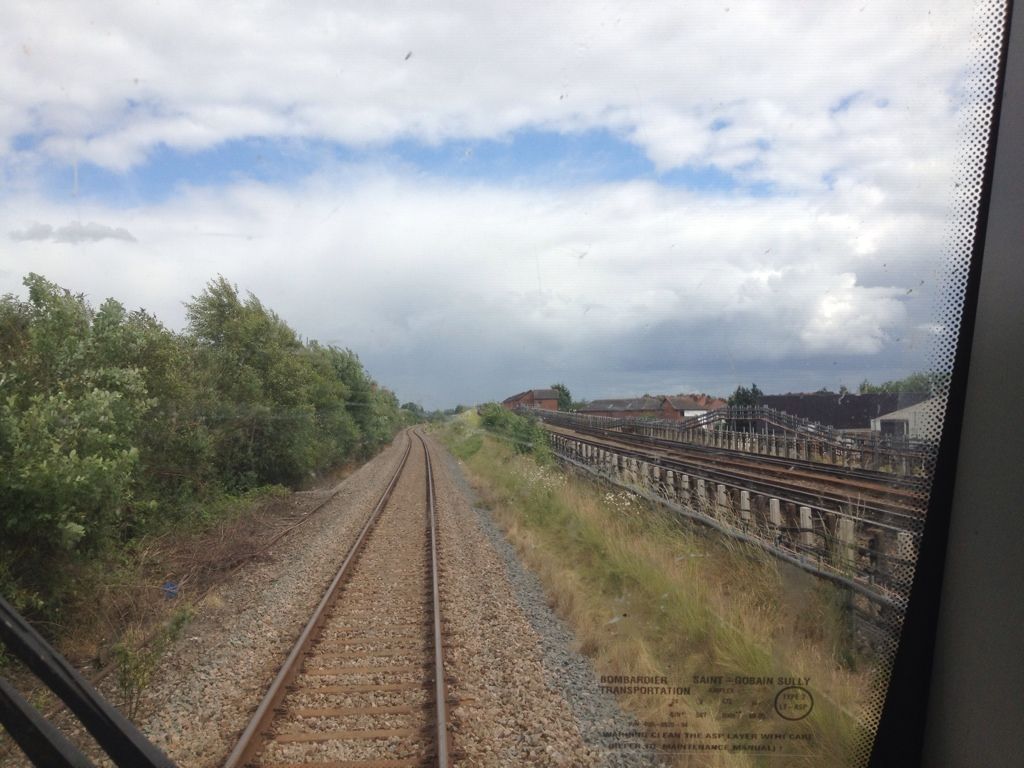

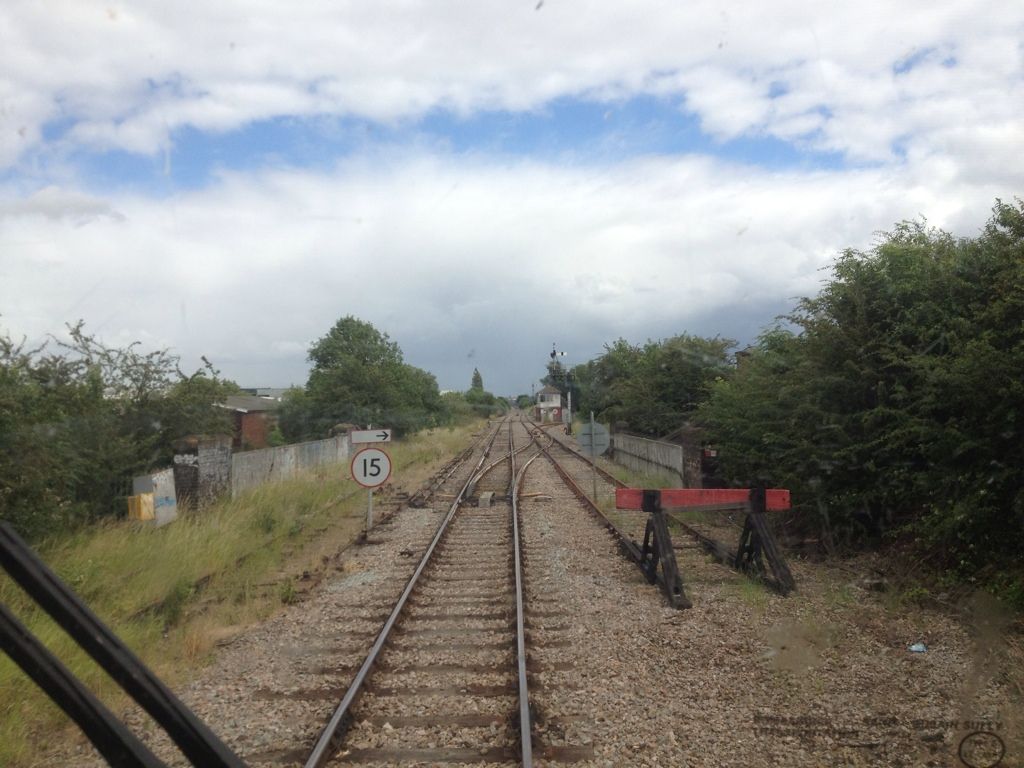
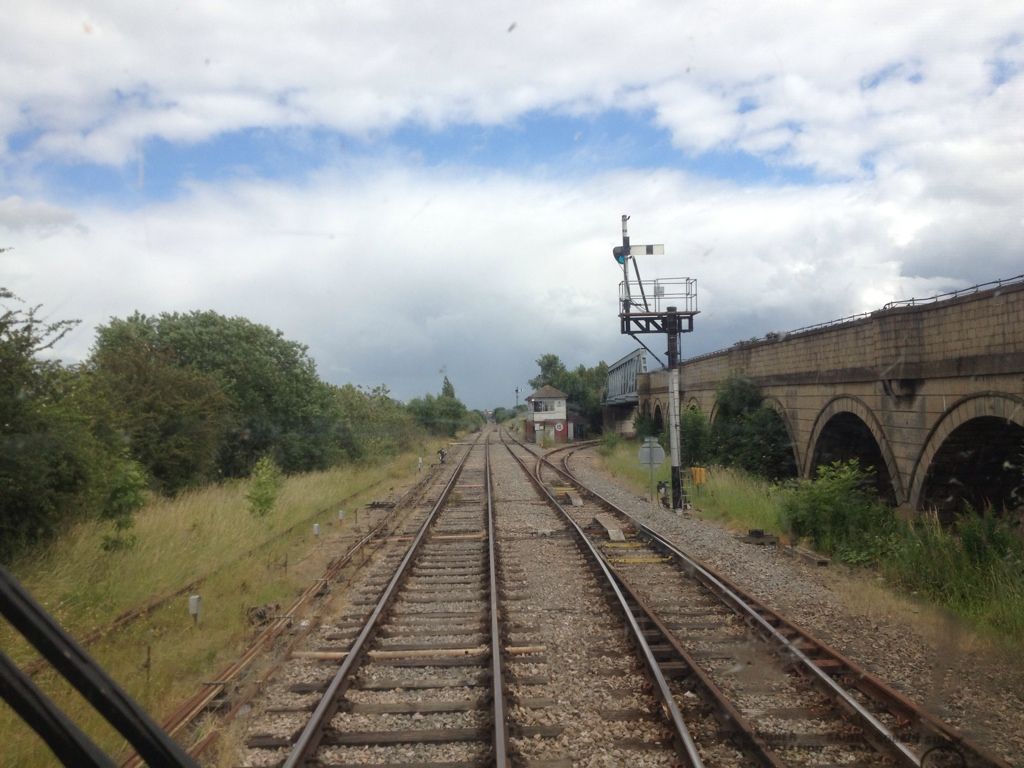
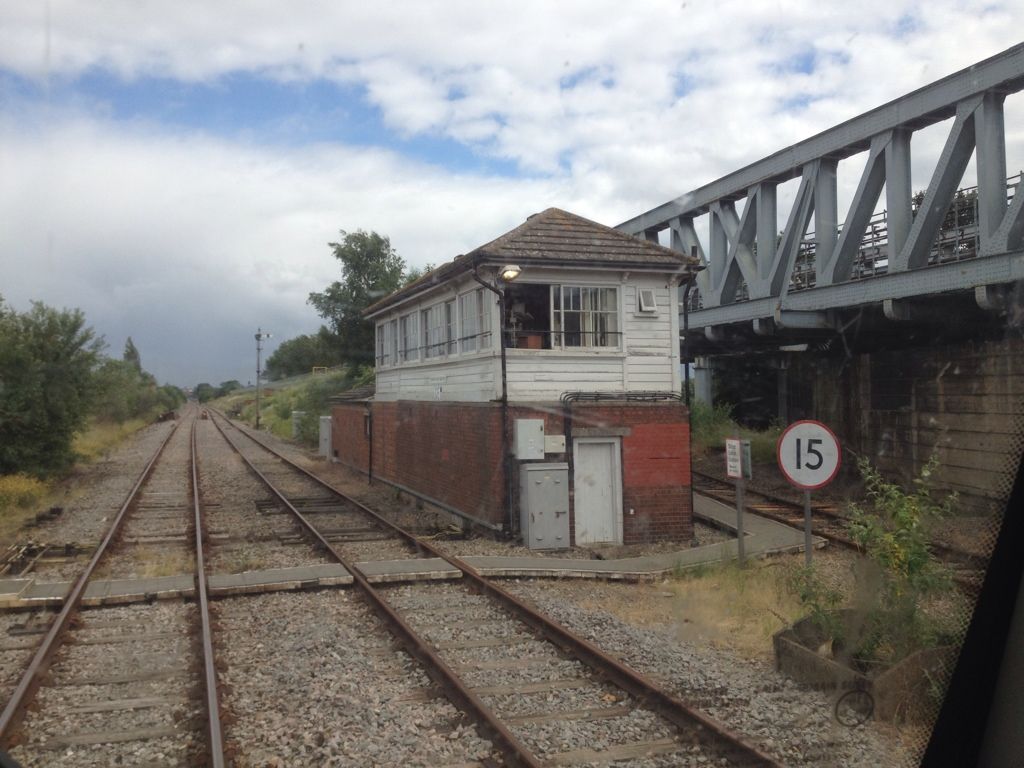
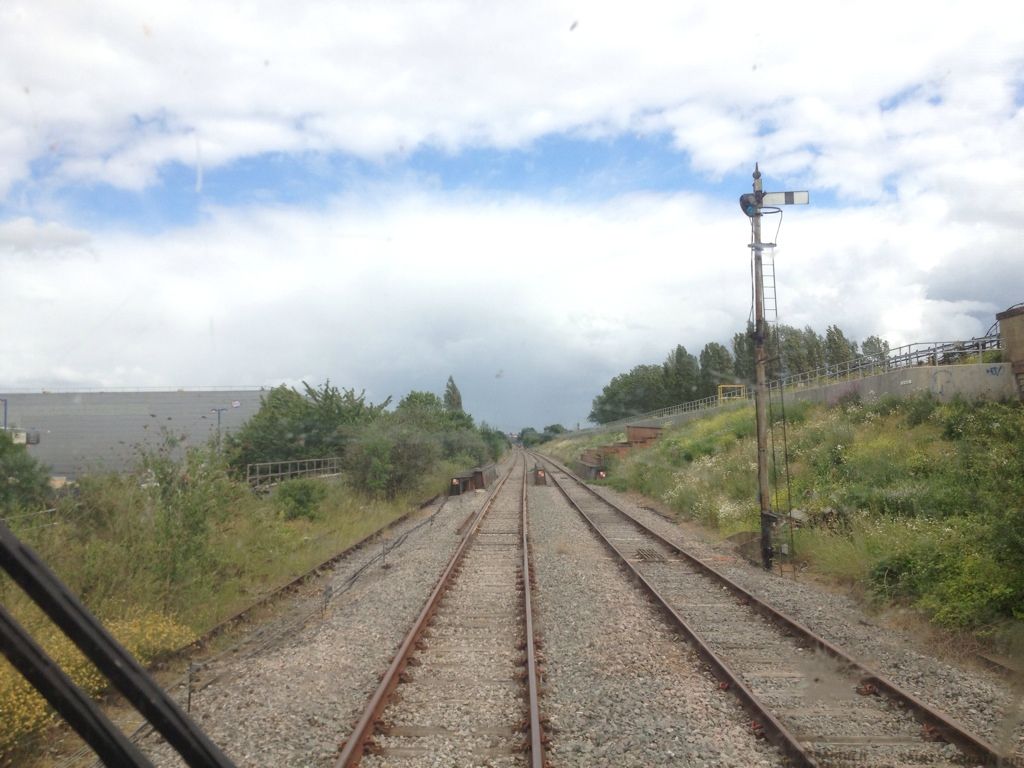

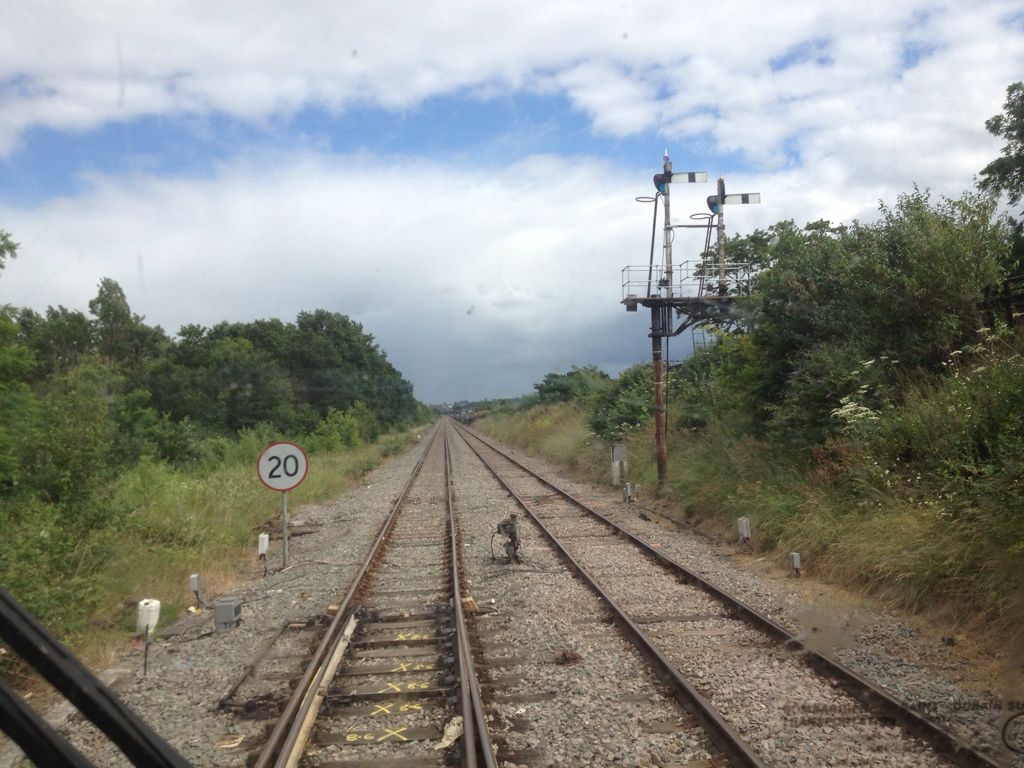
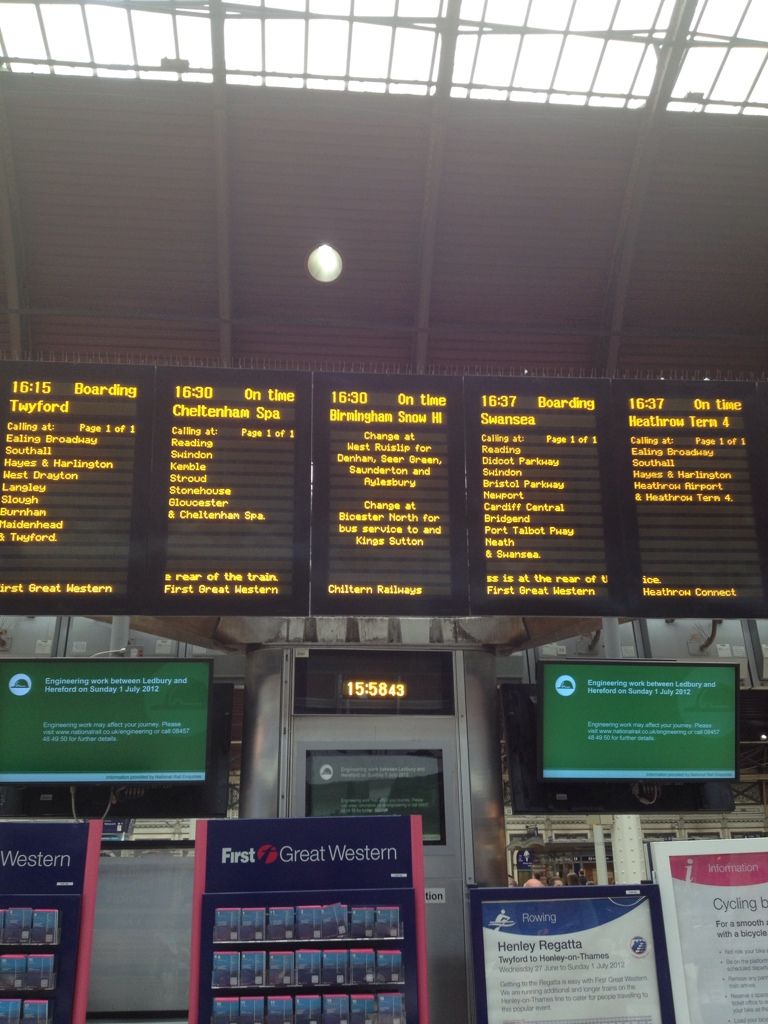










.jpg.473424c3f0f27ef6d401530961bd80ff.jpg)










Railway footage in feature films and television...
in UK Prototype Discussions (not questions!)
Posted · Edited by Pacific231G
Thansk foir this Keef
Though it's listed, it doesn't appear to be available for viewing yet- there is no hyperlink though there is for the other editions listed-. I think though that the final Tx was today so it should be avaialable very soon. It's well worth seeing